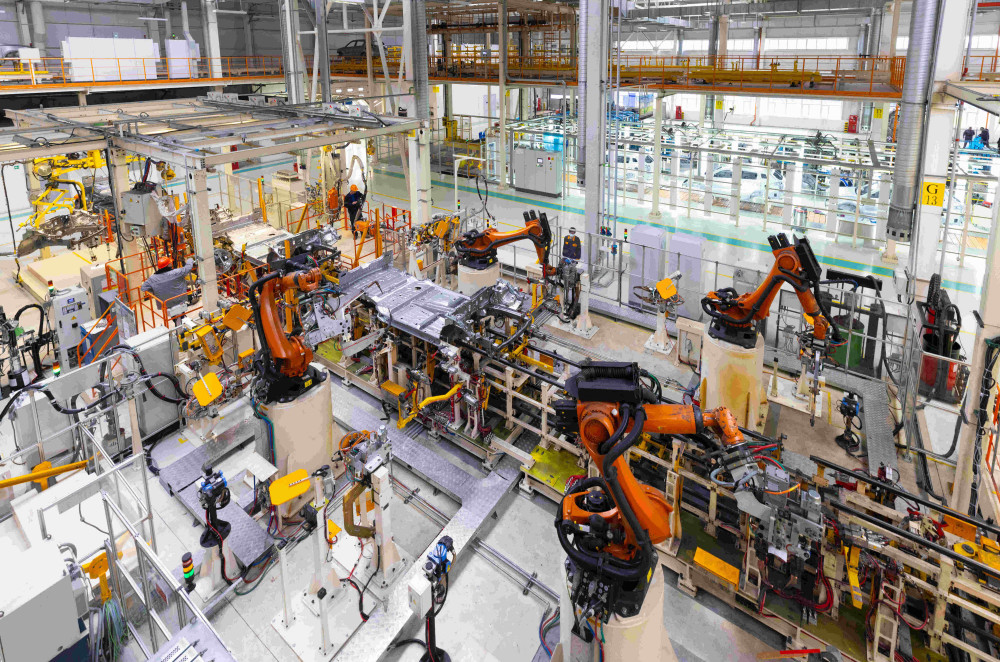Maximizing Efficiency with Machine Availability: A Comprehensive Guide
To boost the efficiency of your production processes, it's essential to focus on a key metric: machine availability. This article delves into the significance of machine availability, covering its calculation, benefits, and strategies for improvement. Additionally, we compare it to a closely related metric: machine uptime.
To boost the efficiency of your production processes, it's essential to focus on a key metric: machine availability. This article delves into the significance of machine availability, covering its calculation, benefits, and strategies for improvement. Additionally, we compare it to a closely related metric: machine uptime.
Understanding Machine Availability
Machine availability measures the efficiency and reliability of your machinery within the manufacturing process. Specifically, it represents the percentage of planned running time that machinery is available for production. This metric is crucial for achieving high production efficiency and is a fundamental component of Overall Equipment Effectiveness (OEE). A high availability percentage indicates that machines are producing for a significant portion of their planned running time.
It's important to note that the term "planned running time" can also be referred to as planned operating time, planned productive time, or potential production time.
Calculating Machine Availability
To determine machine availability, you need to know the machine's planned running time, which typically includes scheduled shifts minus planned maintenance shutdowns or periods with no orders. Additionally, you must account for all instances of downtime, including both unplanned events (like breakdowns) and planned events (like cleaning or changeovers).
Follow these steps to calculate machine availability:
- Identify and record planned running time (scheduled shifts minus planned shutdowns and lack of demand).
- Identify and record total downtime.
- Calculate Downtime Percentage: (Total Downtime / Planned Productive Time) x 100%
- Calculate Availability Percentage: 100% - Downtime Percentage or (Run Time / Planned Productive Time) x 100%
Differentiating Machine Uptime and Machine Availability
While machine availability is the proportion of planned running time available for production, machine uptime is the total time the machine is actively producing. Uptime, synonymous with run time, is used to calculate availability.
From a calculation perspective: Availability = (Uptime / Planned Running Time) x 100%
Manufacturers often start by focusing on uptime due to its simplicity but shift to availability for a deeper analysis involving downtime.
Factors Affecting Equipment Availability
Several factors influence how much of a machine's availability is spent producing. Downtime, categorized into planned and unplanned events, affects availability. Key factors include:
- Uncommented Stops: Stops without recorded reasons hinder improvements as the root causes remain unknown.
- Product Changeovers: Essential but time-consuming, changeovers affect availability. Streamlining changeover processes can mitigate this impact.
- Equipment Breakdowns: Significant downtime due to repairs and part delays. Regular maintenance is crucial.
- Unplanned Maintenance/Cleaning: Unexpected maintenance reduces availability. Scheduled maintenance helps avoid this.
- Material Shortages: Delays in receiving raw materials impact availability. Efficient inventory management is essential.
- Unexpected Stops: Human errors, safety incidents, and unforeseen events like weather or power outages can reduce availability.
Improving Machine Availability
Implement Digital Monitoring
Switching from paper-based to digital monitoring systems can significantly enhance machine availability. OEE software provides real-time data, automates downtime recording, and helps identify patterns, enabling corrective actions to reduce unplanned downtime.
Conduct Regular Downtime Meetings
Regular meetings (daily or weekly) help spot and address new developments quickly. Standardizing processes like changeovers and maintenance can improve efficiency and machine availability.
Implement Preventative Measures
Ensuring that operators and machines are optimally aligned improves efficiency. Strategies like smarter floor layouts and continuous improvement techniques can enhance machine availability.
Conclusion
Machine availability is crucial for efficient manufacturing. By increasing availability and uptime, you can enhance production efficiency and reduce costs. Effective deployment of OEE software, coupled with a culture of continuous improvement, can significantly improve your machine availability score and overall equipment effectiveness.
Interested in digital transformation? Let's discuss!
